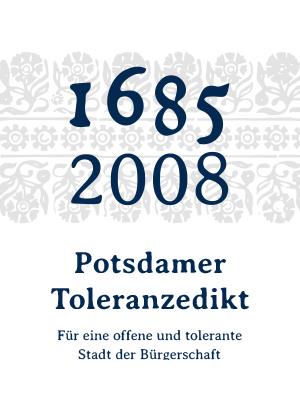Expression pattern of key receptors in the hypothalamus revealed
►Transferring mouse brain slices with a brush onto a microscope slide (photo: David Ausserhofer/DIfE)
German Institute of Human Nutrition Potsdam-Rehbruecke
An announcement from the Leibniz Association
August 24th, 2023
Expression pattern of key receptors in the hypothalamus revealed
There is growing evidence that peptide hormones from the gut have far-reaching effects on the whole organism. By binding to corresponding receptors in the brain, they can modulate food intake and alter metabolic parameters. However, the role of these peptide receptors in critical developmental phases has not yet been thoroughly investigated. Scientists of the junior research group Neurocircuit Development and Function at DIfE have investigated this question and studied the expression patterns of key receptors in the mouse hypothalamus. Their newly obtained findings have been published in the journal PLOS One.
The hypothalamus is a key region in the brain that controls metabolism. It is already known that this brain region is affected during development by changes in maternal diet, particularly high-fat and high-sugar diets. However, the underlying mechanisms have been poorly understood.
Three receptors with important functions
With this background, the team led by Dr. Rachel Lippert, head of the Junior Research Group Neurocircuit Development and Function, has investigated three main receptors for peptide hormones from the gut and their regulation in the hypothalamus during the first three weeks of life in a mouse model. This developmental phase in mice corresponds roughly to the last trimester of pregnancy in the context of brain development in humans.
The receptors studied were the gastric inhibitory polypeptide receptor (GIPR), the glucagon-like peptide-1 receptor (GLP1R), and the cholecystokinin receptor 2 (CCK2R). All three receptors play important roles in glucose homeostasis, food intake, and energy balance. In addition, they have gained popularity as potential therapeutic targets for the treatment of obesity and diabetes.
Capturing the basal state
However, before one can investigate how the peptide hormones from the gut and their receptors in the hypothalamus change under certain nutritional conditions, the baseline condition must first be established. At fixed time points within the first three weeks of life, the researchers removed tissue from the hypothalamus of the offspring to determine the expression patterns of the three receptors. "Only when we understand how these receptors change during development can we ask the next questions regarding their role in the formation of neuronal networks," emphasizes Lippert, whose findings are the first publication of her junior research group, which was founded in 2020.
Specific expression patterns discernible
Contrary to the researchers' expectations, GIPR expression showed a significant decrease during development. In contrast, GLP1R expression increased steadily during early postnatal development. In the expression of CCK2R during the postnatal period, the researchers detected a sex-specific pattern. While CCK2R expression increased significantly in male mice during development, it remained nearly constant in female mice. This suggests a different role for this receptor in the sexes. "Our results suggest that the developing brain responds to peripheral metabolic signals. This is evidenced by dynamic regulation of the studied receptors during early development in the brain," emphasizes first author Dr. Lídia Cantacorps.
Connections uncovered
In a further step, the scientists investigated the potential correlations between receptor expression and physiological parameters such as body weight and blood glucose level. While no significant correlations were found for blood glucose levels, a clear correlation was found between receptor expression and body weight. Both GLP1R and CCK2R were positively correlated with body weight, while GIPR expression showed a significant negative correlation.
Focus on the influence of diet in the future
This comprehensive analysis highlights the complex interplay between gut-derived peptide hormones and their receptors during brain development. The discovery of the developmental dynamics of these receptors paves the way for a deeper understanding of how circulating gut hormones derived from the mother influence brain development in the offspring. "Our findings contribute to our future ability to study the impact of unhealthy maternal diets on the circulation of gut-derived peptide hormones on offspring growth and brain development," Lippert explains. In addition, the results increase the potential for refining therapeutic strategies and interventions to treat metabolic disorders and provide insights into the complex interrelationship between metabolism and brain development.
This work was supported by the German Research Foundation (DFG) within the NeuroCure Cluster of Excellence and by the German Center for Diabetes Research (DZD).
Original publication
Cantacorps, L., Coull, B. M., Falck, J., Ritter, K., Lippert, R. N.: Gut-derived peptide hormone receptor expression in the developing mouse hypothalamus. PLoS One 18(8):e0290043 (2023). [Open Access]
Background information about the three receptors
The Gastric inhibitory polypeptide receptor (GIPR) is expressed in pancreas, stomach, heart, kidney, liver, adipose tissue, and brain. It functions as a signal mediator in the gut-brain axis. While activation of the receptor in the pancreas stimulates insulin release, in the brain it causes reduced food intake and weight loss.
The Glucagon-like peptide-1 receptor (GLP1R) is expressed in pancreas, lung, stomach, heart, kidney and brain. It is involved in the control of blood glucose levels by stimulating insulin release in the pancreas. Activation of the receptor in the hypothalamus results in reduced food intake.
The Cholecystokinin receptor 2 (CCK2R) is highly expressed in the brain, particularly in the hypothalamus. It functions as a signaling mediator in the gut-brain axis and is involved in digestion, emotion, and memory regulation.
Background information on the Junior Research Group
The Junior Research Group Neurocircuit Development and Function (NDF), led by Dr. Rachel Lippert, strengthens the Research Focus III (Food Selection and Feeding Behavior) at DIfE since February 2020. The team aims to find out how neuronal circuits involved in the control of energy homeostasis develop within complex networks in the brain and how they function.
Contact
Dr. Rachel Lippert
Head of the Junior Research Group Neurocircuit Development and Function
phone.: +49 33 200 88 - 2470
e-mail: rachel.lippert@dife.de
Press contact
Press and Public Relations
phone: +49 33200 88-2335
e-mail: presse@dife.de
The German Institute of Human Nutrition Potsdam-Rehbruecke (DIfE) is a member of the Leibniz Association. It investigates the causes of nutrition-associated diseases in order to develop new strategies for prevention, treatment and nutritional recommendations. Its research interests include the causes and consequences of the metabolic syndrome, a combination of obesity, hypertension (high blood pressure), insulin resistance and lipid metabolism disorder, the role of nutrition for healthy aging and the biological bases of food choices and dietary behavior. DIfE is also a partner of the German Center for Diabetes Research (DZD), which has been funded by the Federal Ministry of Education and Research (BMBF) since 2009.












